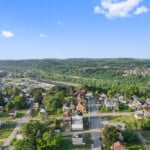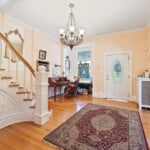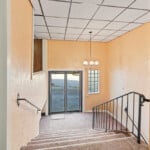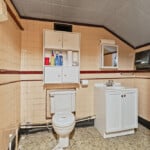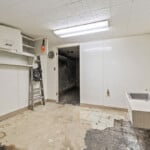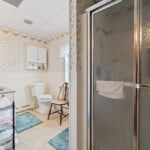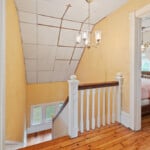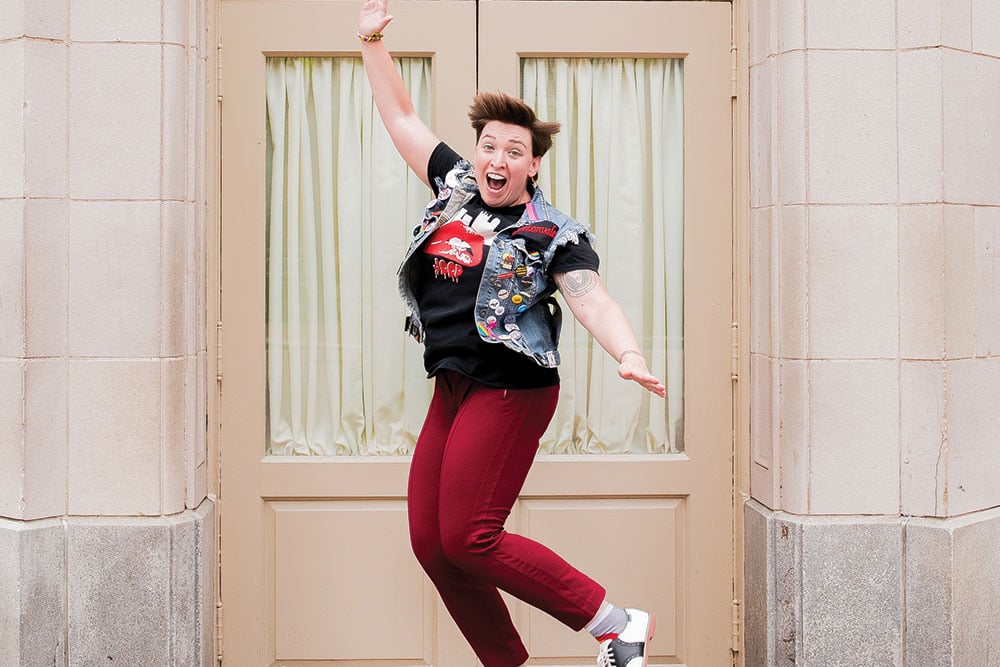Growing Up in a Funeral Home was Full of Life
In 2011, Marlene Fait-Schmalz moved back into the massive McKeesport Victorian on Jenny Lind Street that housed her family's funeral business for decades.
When Marlene Fait-Schmalz walked through the doors of 2403 Jenny Lind St. in McKeesport in 2011, it was her first time in 55 years being back inside the massive Victorian where her family had run a successful funeral home for decades.
Married in 1939, her parents — both funeral directors — were looking for a suitable house for their business when Fait-Schmalz’s mother discovered the stately home on Jenny Lind, which had been built 10 years earlier by a wealthy steel executive who unexpectedly was transferred to Chicago.
“They opened their business in 1940, and by 1947 it was prosperous,” Fait-Schmalz says.
Her parents added a large addition to the back of the home that was built with concrete and steel from the local mills that lined the Monongahela River at the time. While the addition was needed as the business grew, it also meant Fait-Schmalz and her siblings lost their backyard play space. Their father, always creative, lined the flat roof of the addition with the same material used for airport tarmac and set a swing set on top.
“We could play up there as long as we were quiet,” Fait-Schmalz says with a chuckle.
Growing up in a funeral home where services are conducted regularly, Fait-Schmalz says being noiseless was of utmost importance, but the family was always inventive and creative. When the children begged for a dog, their parents told them the barking would be an issue for their business. Kids are persistent, though — and their father ended up purchasing an African Basenji, which is known for having no bark.
“They have short hair and can climb trees. We named her Senji, and there was a picture of my father with her in the paper in the 1950s,” Fait-Schmalz recalls.
Despite what some might think about living in a funeral home, Fait-Schmalz says it was a wonderful place to grow up.
“It was a happy house,” she says, “We had great Christmases and Easters; we went to the church across the street. It was a nice community up on the hill.”
The home, which is just over 6,200 square feet and has five bedrooms, one full bathrooms and two half bathrooms, was known as the Richard L. Fait Funeral Home until the 1970s, when another funeral director purchased it.
It changed hands several times through the years and had various purposes. Then, in 2011, Fait-Schmalz got a fateful call. Her old classmate, Duane Turnbull, had purchased the home and restored many portions that had been damaged over the years.
“He looked through the deeds and saw it had been my parents’ old funeral home and asked if I would like to buy it,” she says. “I hadn’t been back in 55 years, though I bought it sight unseen.”
Fait-Schmalz enjoyed returning to the town where she grew with her late husband. Though there’s been many changes to McKeesport, she says being back stirs up fond childhood memories. It’s time, though, for her to move on. The home is now listed with Kelly Frey of Berkshire Hathaway HomeServices for $475,000.
“This is a home that simply takes you back in time from the moment you step from the grand front porch into the soaring ceilings and sweeping curved staircase of the majestic entryway,” Frey says.
She sees potential all around, envisioning using the flat roof as an outdoor entertaining space; it has a perfect view of the city’s fireworks.
Frey also loves the home’s intricate woodwork, historical details, spacious flow — and updated infrastructure. Frey notes there are two new boilers that cost over $20,000, while recent roof updates came with a price tag of $15,000.
“I like to point out what I call the ‘non-sexy stuff,’” she says. “These are the items of a home that are not fun to spend money on and many times you don’t even see, but are necessary.”
Four marble fireplaces, original stained glass and a six-car garage are just a few of the home’s other standout features Frey says the property is zoned for single-family or multi-family use, so the possibilities are endless.
“The seller is wishing to sell the property and most of the contents together, as is,” she adds. “There are simply incredible pieces of furniture and antiques.”
While the next owner may make some cosmetic updates, Frey is excited for the possibilities that exist for this grand piece of local history.
As for Fait-Schmalz , who is the last remaining one of her siblings, she says this will be her final involvement with the home that’s been a part of her life for decades, and she’s OK with that. She remains thankful for the chance she took when returning to a house, and a town, that shaped her as a child.
“We were the first class out of the high school in 1962 when it was brand new… we had a very good experience,” she says. “It will be out of the family now, but it doesn’t seem like a funeral home at all anymore.”
Meg St-Esprit is a Bellevue-based freelance journalist who covers real estate, lifestyle, education, parenting and travel for a variety of local outlets including Pittsburgh Magazine, PublicSource, Kidsburgh, Pittsburgh City Paper, and City Cast Pittsburgh. Meg offers Hot Property, an inside look into unique and historic homes on the market. Each week, Hot Property goes behind the For Sale sign to share the story of a special Pittsburgh-area home.
About: McKeesport
Population: 17,1749
Planes, Trains, & Automobiles: Most residents of McKeesport own a car, though there are walkable portions of town. Access to Interstate 376 means Pittsburgh International Airport is about a 40-minute drive away, and there are multiple bus routes in the community as well. A commuter bus takes residents to Downtown on weekdays.
Schools: McKeesport Area School District (mckasd.net)
Neighborhood: Named for Scotland native David McKee, who settled in the area in 1775, McKeesport rose to national importance during the 1900s as a center for manufacturing steel. In 1901, the National Tube Company and nine other major American steel companies merged to form U.S. Steel. The city’s population continued to climb, reaching a peak of 55,355 in 1940. Like many Western Pennsylvania river towns, the community has seen the loss of retail and industry, initiated by the steel mill closures in the 1980s. Although the population is a third of its wartime high, McKeesport today is a diverse mix of races and nationalities, with local stakeholders invested in their town as well as maintaining the close-knit community. The city is known for its annual International Village, a three-day ethnic food festival featuring cuisines from across the world.
Neighborhood data provided by Niche.



















